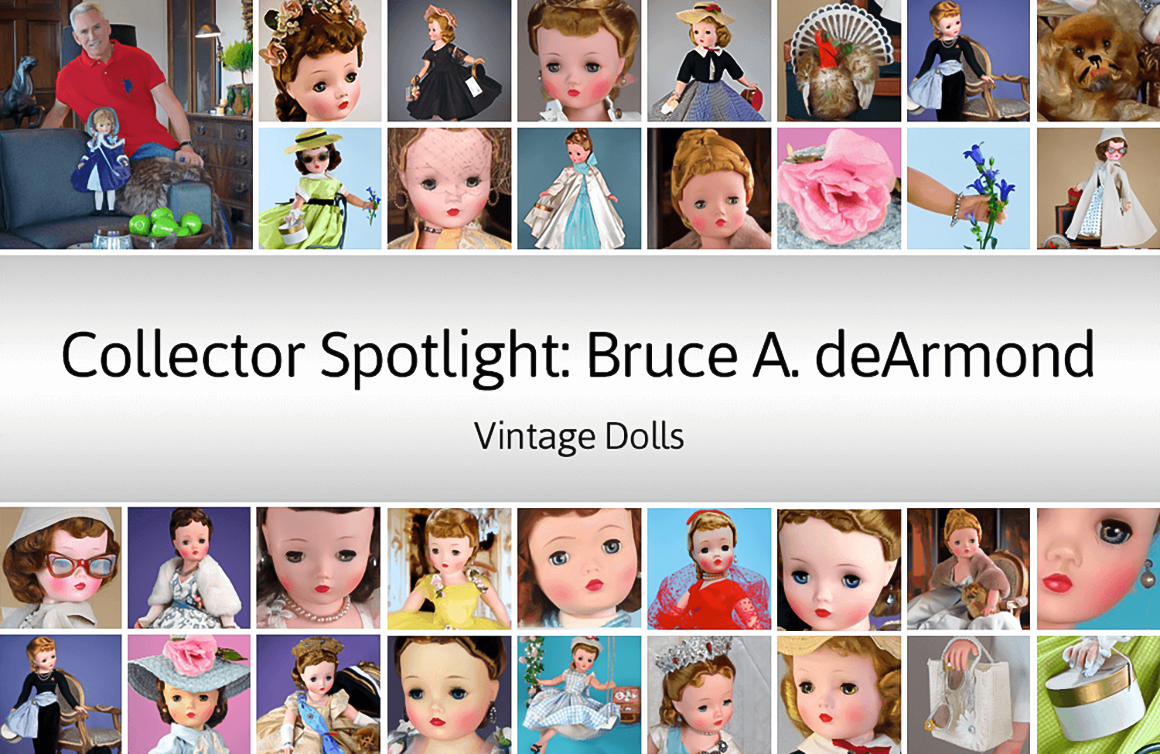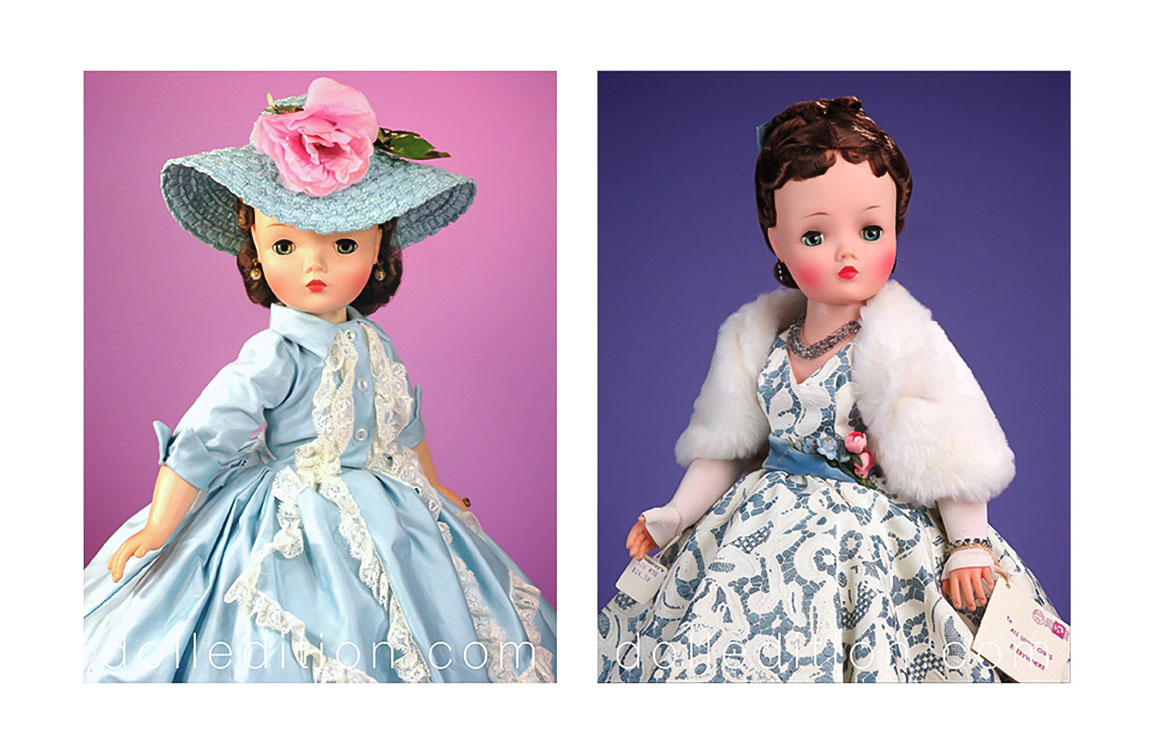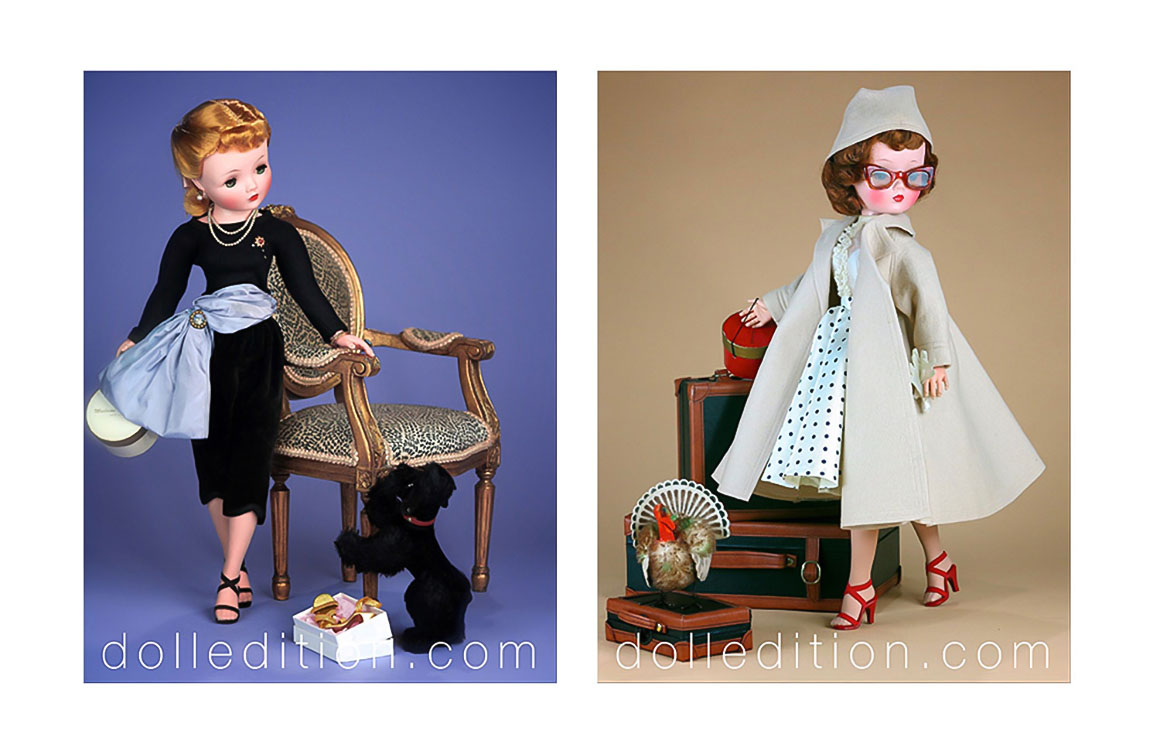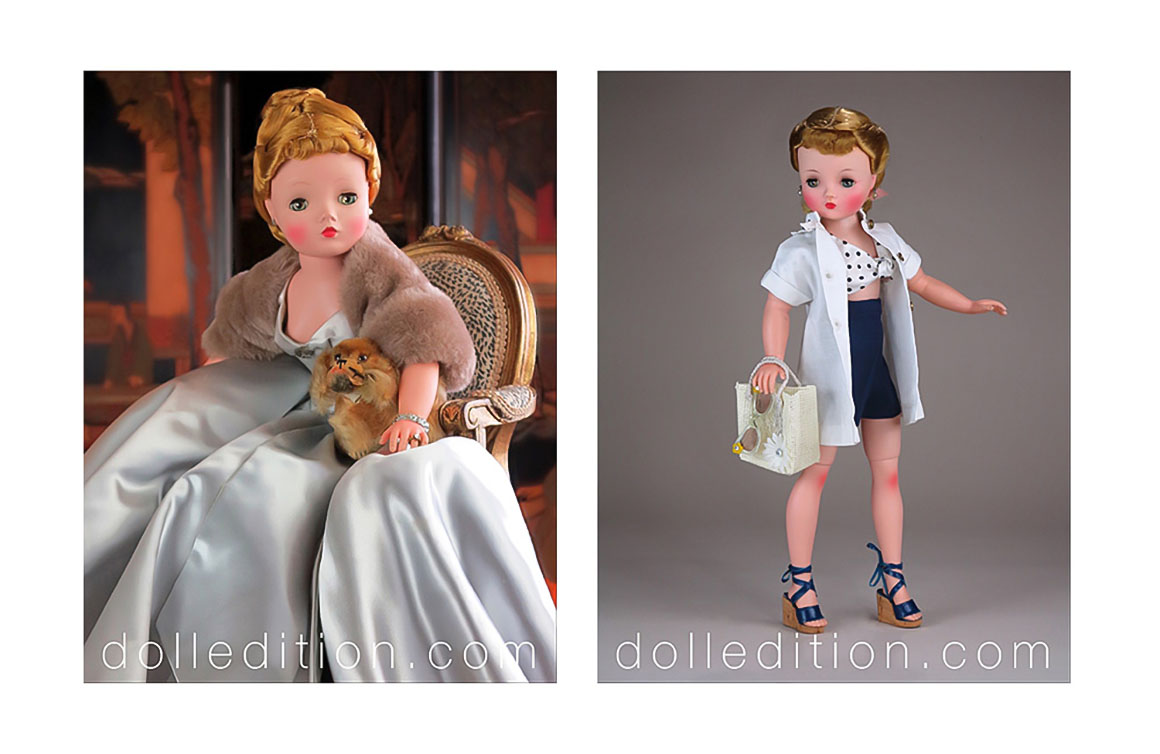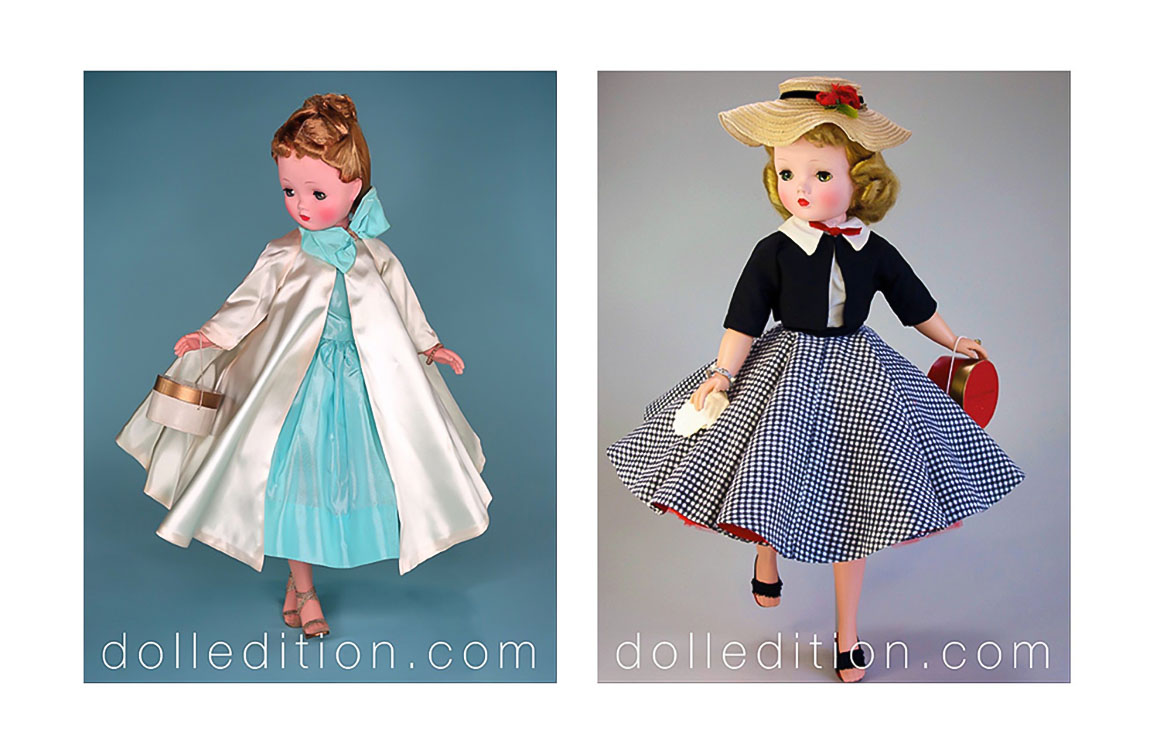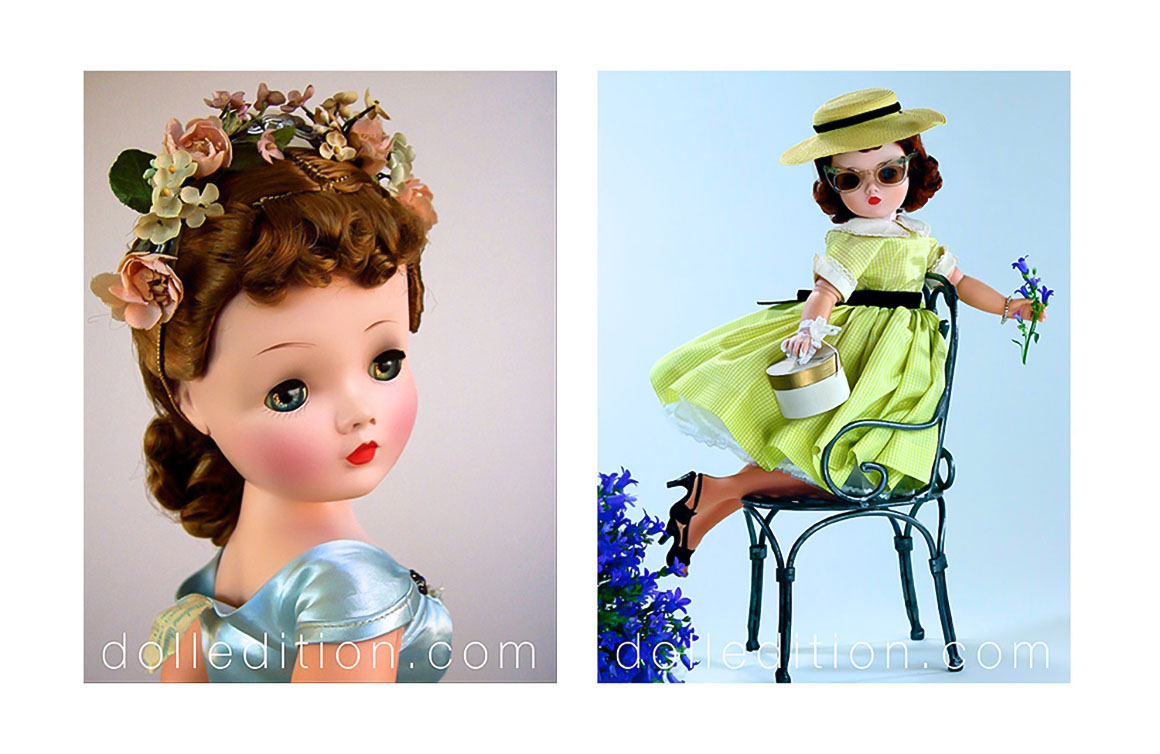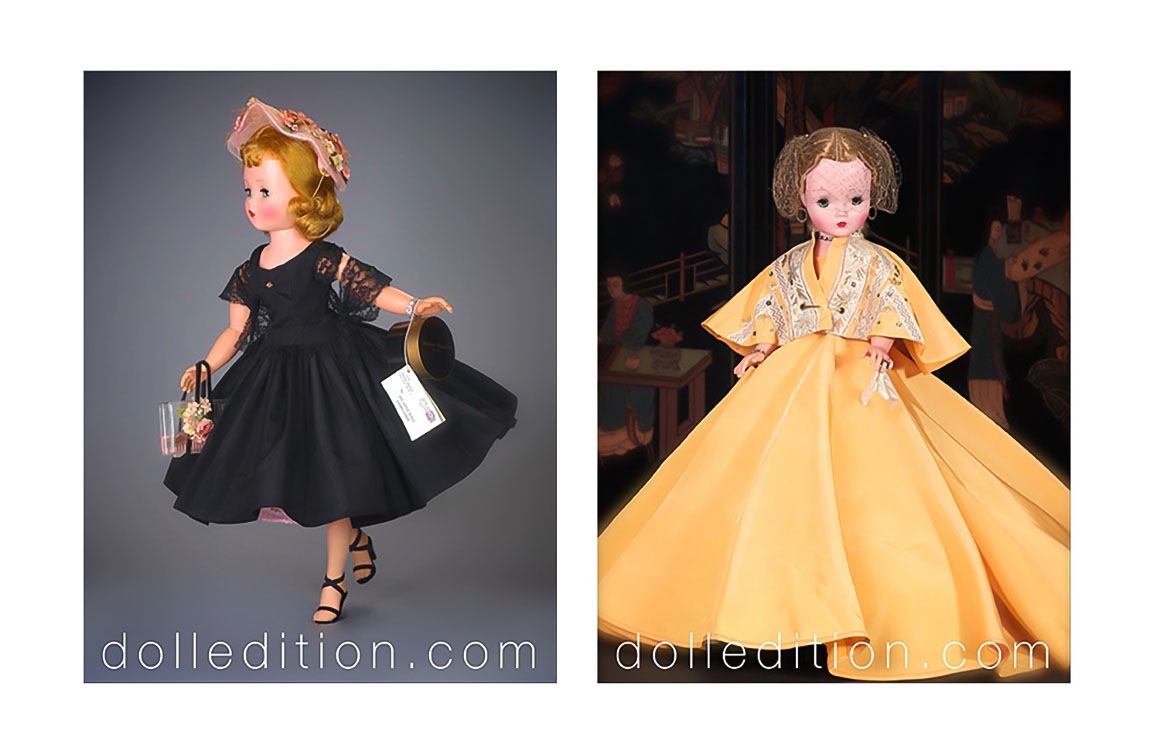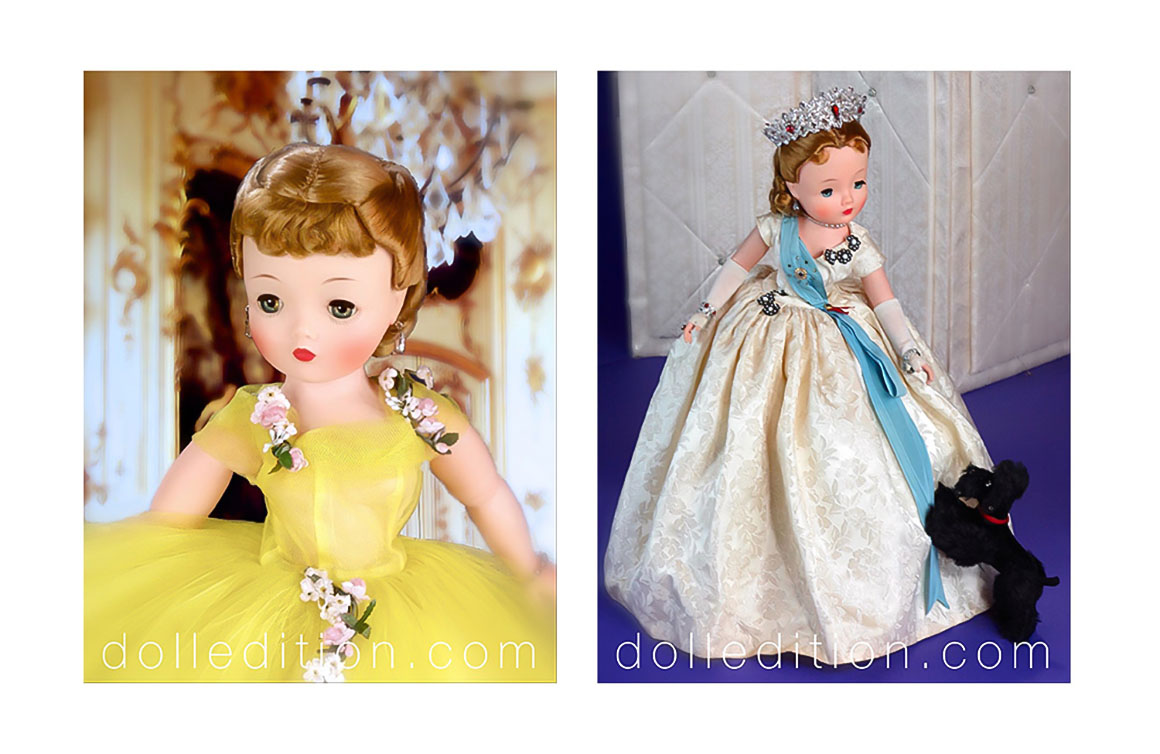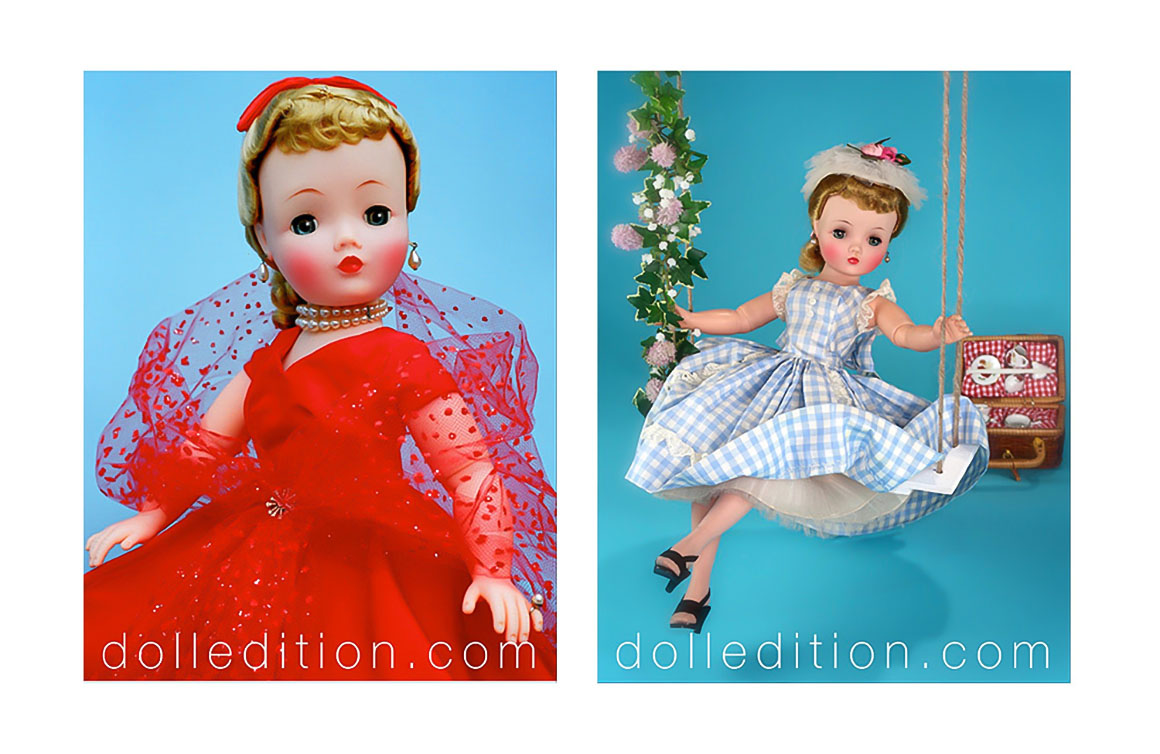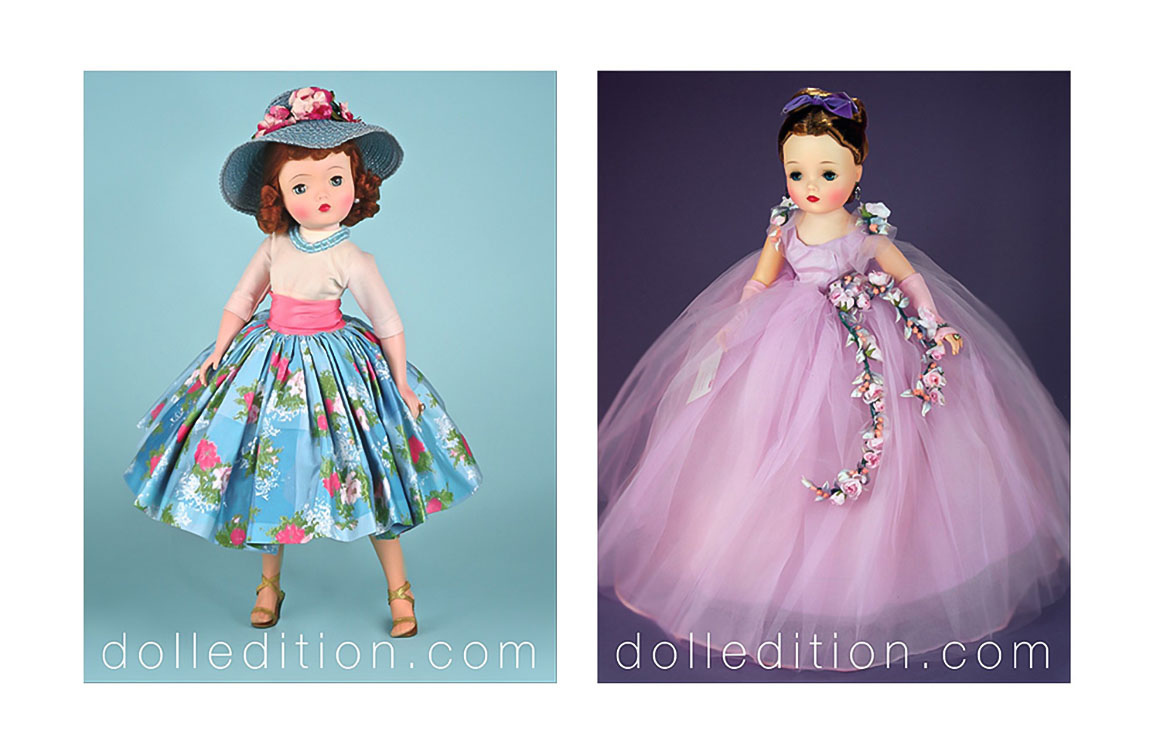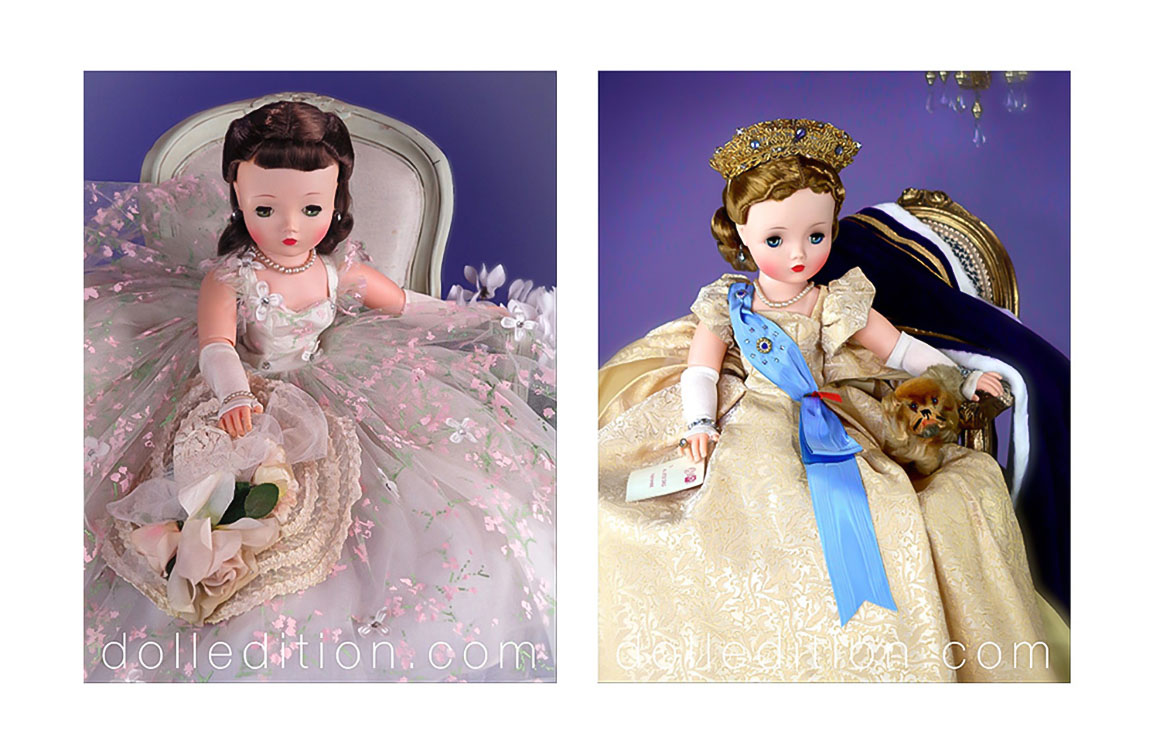How do you describe your collection?
I collect the dolls of Madame Alexander and the Alexander Doll Company. The Cissy doll is the main focus of my collection.
The size of my collection is a moving target. I know some collectors are very passionate about what they collect and nothing ever leaves their collection. I’m a little more focused on a particular vision for my collection. To make that happen, selling is almost as important as buying.
A lot of what I collect is determined by what I’m researching. Over the decades, I’ve been involved with several museums, which has gotten me interested in things like provenance and storylines. I have also become interested in different aspects of fashion and the people who created fashion, which in turn — at least for the mid-century — was really beautifully reflected on the Cissy doll. My website is an extension of that interest.
I use different dolls to help illustrate what was happening in society and culture at the time. That’s conveyed in how the dolls were dressed. The fashions for the dolls were pretty intricate. This must have been a passion for Madame Alexander, because the level of detail and the number of outfits that were introduced each year is impressive. The range of clothes, hats, and accessories — even the things you don’t see, such as undergarments — really mirror the transition that was happening in society during the 1950s and ’60s. There was a lot happening then fashion-wise in society.
My personal mission for my collection is a museum setting. It’s not necessarily a physical building but rather an online destination where people can view, research, and study it in a contemporary way. Doing a museum can be problematic. There are so many layers to that approach, and many museums have come and gone. But, I think we’re reaching a point where if we don’t make a decision, some of this history will be lost. It’s easier said than done.
A lot of people don’t even know that I collect dolls. Dolls — for some people — have a creepy image. Movies and television are filled with crazy characters that seem to be of limitless fascination in Hollywood.
When and why did you start your collection?
My collection has been a long journey, starting when I was in my 20s.
I am from a collecting family. My parents were long-time collectors, so I grew up around that. My mom gave me two pieces of advice when I started my own collecting. She said I’d have a much better collection if I learned to sell because that would help me get rid of my mistakes, which in turn would teach me what not to buy again. The other piece of advice she offered was to edit, because the lesser dolls hurt the better dolls. Those two philosophies created an important foundation for me.
When I started my first collection — which happened to be Barbie — I was collecting for a couple of years. I had seen the Cissy doll at a couple of doll shows when I decided to buy my first one. I then sold the Barbie collection to change my direction. My Barbie collection became the foundation for another big Barbie collector. I think that transition was almost destiny for both of us.
With Barbie, it was again the fashion. I was really intrigued because I was working as a store planner for a department store. While my focus was on the home furnishing areas of the store, it was fascinating to explore the entire store, and fashion was a big part of it. With my then-untrained eye, I recognized Cissy as a doll who was interesting in that she was a reflection of a particular time in mid-century fashion. She was a decade earlier than Barbie and had a more upscale look. It was a fascinating time that has pretty much disappeared now.
How do you display and store your collection?
That is an interesting point.
I learned a lot about conservation as part of my work with museums. The only time a doll of mine is out is when it’s being photographed or is going into a competition or presentation. Otherwise, they stay out of the light and away from dust. I have so much invested in the dolls, and there are only so many examples available. There’s a lot of incentive to protect that investment.
It’s almost a cliché to say, but we’re all basically temporary caretakers for our collections. When a doll leaves me, it is in the best condition I could possibly keep it. That is partly how I became interested in photography — it gave me a way to enjoy the doll whenever I wanted through the photographs I took.
It can at times be overwhelming to coordinate all these parts and pieces of the collection. I like to be able to shut the door and get away from it, too. Most people who come into my home wouldn’t have a clue I had a doll collection. I think it can be a little unsettling for people who aren’t familiar with collecting to walk into something like this — all those little eyes. Not everyone is ready or willing for that experience.
What do you consider to be the Holy Grail of your collection?
My personal Holy Grail, which I have yet to find, is the 1957 Grace Kelly doll. There are three or four out there but they are incredibly rare. I would love to have one.
Madame Alexander created a number of dolls to look like people such as Lucille Ball and Grace Kelly. The problem was, she didn’t always have the license to do so. As a result, only a handful of the dolls made it to the retail market and they tend to be some of the most elusive.
The company was generally careful in its licensing. Some of the more famous or well-known licenses were for the Dionne quintuplets. That was the company’s first big licensing deal. But, sometimes they took a shortcut and didn’t get the licensing so they got shot down pretty fast. In 1961/’62, they did a Jacqueline Kennedy doll and the White House came out right away and said “No, thank you”. Some of the stores pulled the doll, but others just changed the name so it didn’t reference Jackie anymore. There were also stores — maybe they didn’t get the memo — that kept it out for sale. The newspapers had a field day with the story. It caused such a headache for the Alexander Doll Company, who were used to only having rave reviews.
A favourite doll of mine is a really beautiful 1958 Cissy doll. Her dress is a floral print on tulle. It’s very romantic, very mid-century 1950s. It follows a process they did for evening gowns and prom dresses for the dolls. They replicated it so well in miniature. It’s very susceptible to light and dust, so a lot of examples you see are faded, and the tulle is starting to yellow. I have such a beautiful and clear representation of something impractical to do. It’s easy when you’re a collector to forget that these were toys that children played with. As we look at them now, it’s almost sacriligious to touch them. This doll beautifully exemplifies the vision of Madame Alexander.
During the era that Cissy was produced, all the parts and pieces were coming together to make the dolls possible. There was a healthy economy and a baby boom after two decades of war and a depression. The 1950s were so glamourous. It was the right doll at the right time. Then, of course, came Barbie and she knocked Cissy and everyone else out of the fashion doll competition. The world marches on.
What advice would you give to someone interested in starting a doll collection?
Research. Understand what you’re collecting.
There’s a history of accidentally or intentionally misrepresenting dolls. The better your eyes are trained to identify what is original, the better collection you will have. It makes a big difference.
There can be peer pressure in some of the doll groups to do what each other is doing. I understand that at a social level, but not a lot of great collections come out of that process. You really have to make hard decisions for yourself at times — what is possible versus wishful thinking. Sometimes as collectors we just want so badly to find “the one” at a doll show or have the winning bid on eBay. You have to get over those emotions and be more analytical.
Drop us a line to let us know about your collection of vintage toys and/or games. We just may feature your collection!

